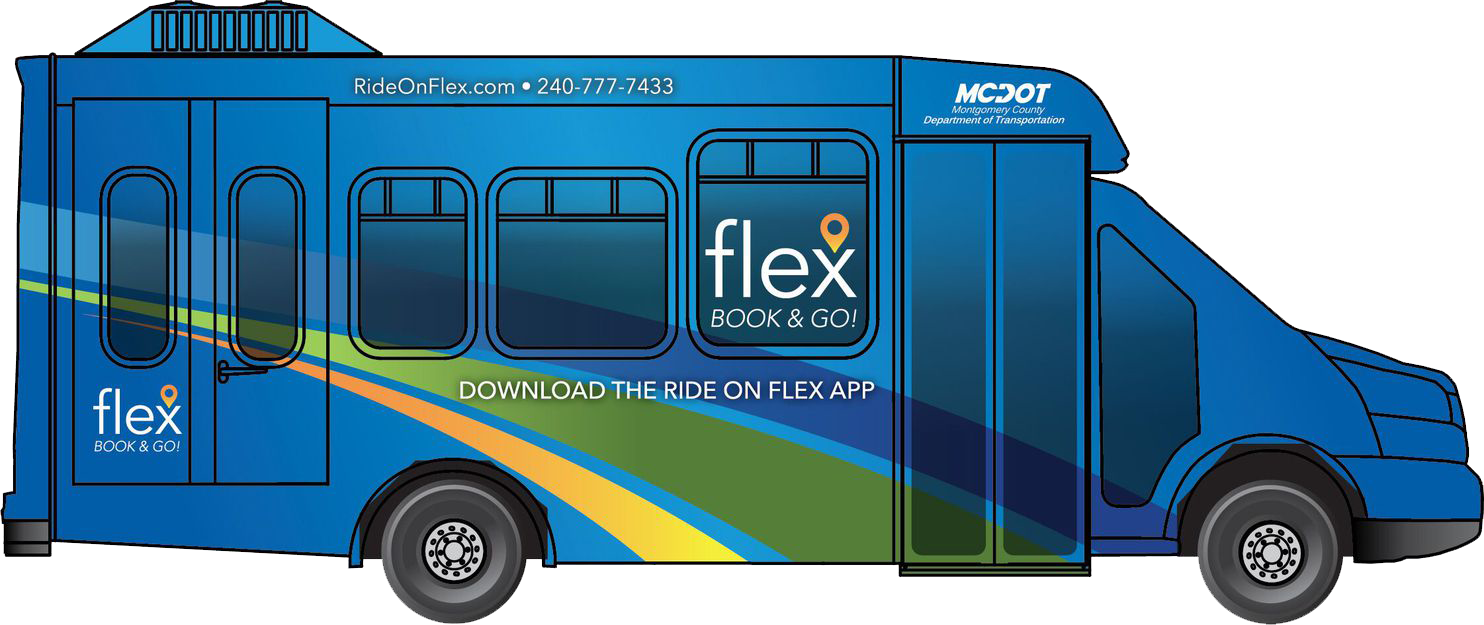Ride On Flex serves the D.C. area with app-based rides
Case Studies
How the Roam™ app applies
The Roam™ app will offer a robust reservations system via mobile app that serves the Roam™ community members. That same system could be applied to external partners, taking the technical and support load off of regional agencies or other entities.
What’s the situation?
The Montgomery County, MD, Department of Transportation's transit service helps riders travel within defined zones. The service, named Ride On Flex, has no fixed stops or schedules. It comes when a rider books a ride during regular service hours. Best of all, the rider only pays standard Ride On fare.
How does Ride On Flex work?
It connects riders in zones to transit hubs, commercial centers, public services and home, using the mobile vehicle and a call center option for booking rides, and launched with only eleven brand-new passenger buses.
What are its goals?
Ride On Flex identified attainable objectives early on. The original launch in 2020 addressed the need to deliver an increased volume of passengers to the Metro stations.
Modifications have been made
The service made frequent adjustments as it expanded. For example, drivers were more carefully identified and self-selected. Eventually, many drivers came to prefer working Ride On Flex – there’s even a waiting list of interested drivers.
The data collected was the basis of modifications. Ultimately, these modifications have made the Ride On Flex program so popular, that when interviewed, the majority of riders greatly endorsed expansion.
Evaluating productivity
Most new transit services typically take at least 12 months to reach their productivity potential. The percentage of Ride On Flex requests that were converted into completed trips grew immensely over the first couple of months.
Measuring rider satisfaction
Is difficult to assess. given that the Ride On Flex was not just a new service but a completely new concept for Montgomery County, MD. However, a Microtransit Performance Assessment was conducted only one full year after the 2020 launch, and it indicated riders were embracing the service.
Performance measures are a pride of the Montgomery County operation. They show that reliability is as important as profitability. Other transit systems, from Texas to California, are using variations of the Montgomery County model. In Montgomery County the model has been in place since 2020, using largely in the same format.

